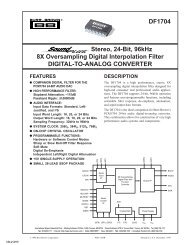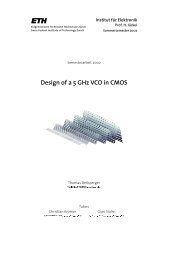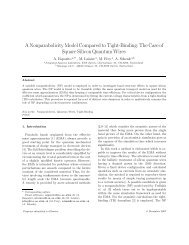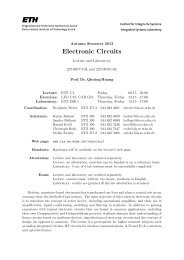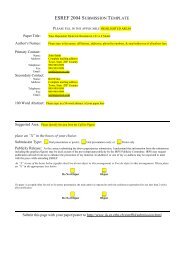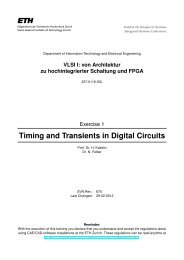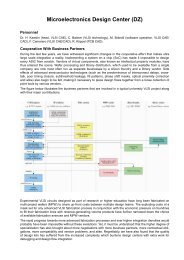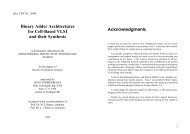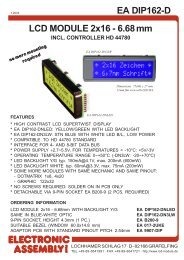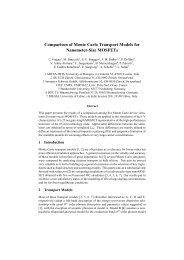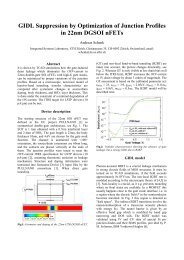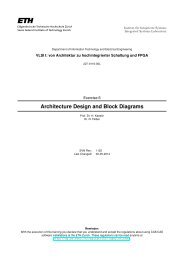SoC Encounter for Designers II - Integrated Systems Laboratory
SoC Encounter for Designers II - Integrated Systems Laboratory
SoC Encounter for Designers II - Integrated Systems Laboratory
Create successful ePaper yourself
Turn your PDF publications into a flip-book with our unique Google optimized e-Paper software.
a• Set the options as shown in the figure below and hit OK. Watch the progress of the optimizationin the console window. CADENCE SOC ENCOUNTER is very verbose with itsactions.Cadence <strong>SoC</strong> <strong>Encounter</strong> will already automatically add a small margin on its own (internally)During optimization CADENCE SOC ENCOUNTER can select different drive strengths <strong>for</strong> cells, add/removebuffers and inverters, move instances or even restructure part of the logic (just like synthesisdoes).Optimization is done using iterations of timing analysis, optimization, trial-route and parasitic extraction.As a last step CADENCE SOC ENCOUNTER per<strong>for</strong>ms a timing analysis on the optimized design,prints the summary to the console and writes the detailed reports to the timingReports directory.Student Task 24:• Take a look at the summary and the final reports generated. There should be no violationsleft.But what happens if we can not fix the violations with optimization? Again, first make sure to understandwhat your constraints are and why they are violated. Often there are errors in converting thedesign specifications to constraints (is the input delay really 3.5 ns? Also <strong>for</strong> this pin?) and describingthem properly with the commands available. If you still have problems, there are three levels whereyou can reach a solution:• Optimization during backend design (CADENCE SOC ENCOUNTER )CADENCE SOC ENCOUNTER can optimize the design at every stage of the design process. Ingeneral, the earlier the stage, the more changes can be done, e.g. PRE-CTS optimization hasmuch more flexibility than POST-ROUTE optimization. At the PRE-CTS stage registers can bemoved and resized, this will no longer be possible after clock tree insertion. On the other hand,the parasitic interconnect in<strong>for</strong>mation is much more accurate with later stages of design, so thetiming in<strong>for</strong>mation (and hence the optimization goals) will be more accurate.We can (re)run the optimization at various stages, try a new placement or even start with anew floorplan. It is impossible to give general guidelines, you will have to see what works best<strong>for</strong> your design. If you are far from meeting your target (e.g. <strong>for</strong> a 10 ns clock, if after alloptimizations you still have a timing violation of 2 ns), you may need to go back to synthesis.32



